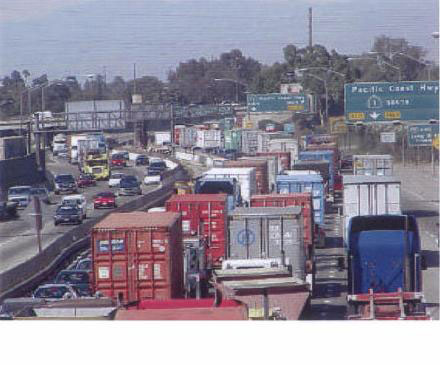On Tuesday of this week, the U.S. Department of Transportation designated a network of highways as the proposed Primary Freight Network – highways which will receive priority funding for infrastructure improvements.

Today, the Centers for Disease Control released a new Morbidity and Mortality Weekly Report, Residential Proximity to Major Highways — United States, 2010, which reveals that “approximately 4% of the total U.S. population lives within 150 meters of a major highway, suggesting increased exposure to traffic-related air pollution and elevated risk for adverse health outcomes.”

The facts are clear – diesel exhaust, the predominate public health risk from freight transportation – is deadly, it sickens many, and kills some.
If, as intended, highways that are part of the Primary Freight Network are upgraded to handle increasing volumes of freight, millions of people – especially in socially disadvantaged communities – could face increased health risks.
The CDC recommendation?
Focusing prevention and mitigation interventions in urban areas, where there is a higher concentration of traffic-related air pollution and a greater proportion of the population residing near major roads, and in areas with the most socially disadvantaged populations will likely result in larger health benefits (37). Future and ongoing efforts to address disparities in residential proximity to major highways and traffic-related air pollution exposures will require an interdisciplinary collaboration between transportation, urban planning, and public health specialists.
Question for our readers, especially those in the Congress and Executive Branch –
- Does the Federal government plan on integrating public health considerations and experts into the transportation planning process?
- Will the final Primary Freight Network be aligned so as to minimize the number of people in the high health risk zone?
- Will priority funding for the Primary Freight Network include air quality monitoring in the high health risk zone, especially in heavily populated areas?
- Will provisions be put in place to ensure that the health of vulnerable populations is improved rather than damaged by future infrastructure improvements?
